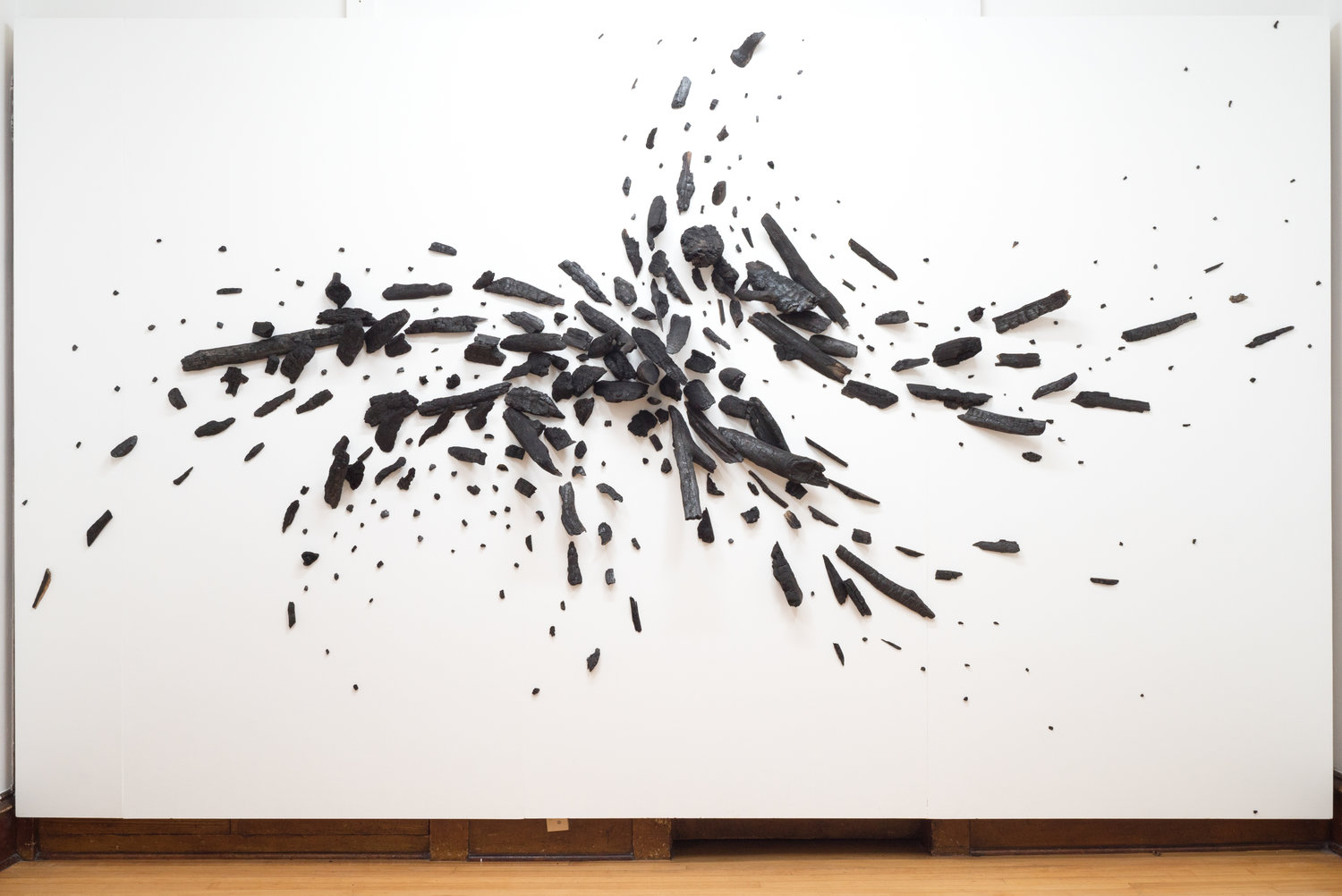Restless Earth: A studio visit with Brian Napier
Written by Kristopher Wright | info@odessadenver.com
10.22.2016
(Denver CO) For Brian Napier, art making is a marathon rather than a sprint.
A researcher and bookworm at heart, Brian creates paintings, illustrations, sculptures, and installations which examine the indifferent nature of nature; the existential play of human beings and the debris left in our wake.
A native of the Oklahoma plains, Brian moved to California where he quickly fell in love with his natural surroundings and the the Earth’s ability to relieve stress and create new perspective. In 2011 Brian left for Colorado where he would continue to pursue his career in fine art making.
His BFA thesis, an installation which utilized burnt timber found in the wake of a recent forest fire, would be his first breakthrough in bridging the gap between his interests in art, social responsibility, and the environment.
But Napier’s work is functioning on a level far beyond environmental activism; Instead, his interests are rooted in the very nature of art itself. And it is only in framing his practice through the lense of ‘environment’, that he is able to investigate Man and Earth as a duality rather than a problem in need of a solution.
‘I tend to think of the act of making as an avenue into this long running conversation that starts over and over again. But it gets hard when you start addressing things that are so politicized or controversial, because you feel an intense obligation to inform and defend as much as possible…But then again, too much information can take away from the fluidity of that dialogue, so I think I’m always going to be striving for that balance.’
Brian’s work falls into two main categories: Found-object installation and illustration. The former tends to focus on Earth and the other, of Man. Inspired by Cormac McCarthy’s “The Road” and “No Country for Old Men”, his illustrations take interest in the stories of settlers and scalpers of the early American West. In these works, the faces of these figures dominate the picture plane, confronting the viewer head-on.
Ominous washes of color and impossible shadows create feelings of quiet unrest while tally marks across the backgrounds serve as a ghostly shadow; reminding one of the countless indigenous lives lost in the process of settling a continent. Red crosses, desolate land masses, and spiraling telephone poles set the tone of a symbolist reality. A stage, set for the theater of man.
But unlike McCarthy’s writings, Brian’s work has a softness to it. It leaves as much space for understanding and reconciliation as it does judgment and blame.
‘I don’t like to frame the work in a negative manner. It would be very easy for me to take this tragic material and display it in a tragic way. So, I try as hard as I can to play a neutral role in making the work, because I too am involved in this whole processes of consumption, destruction, and renewal.’
Perhaps the most paradoxical aspect of Napier’s work is that, the making of these objects is, by nature, a disruption of the very processes which the work strives to bring attention to. In this way, the exhibition space can only serve as a catalyst for the temporary suspended animation of an unstoppable force.
Brian received his BFA from the University of Denver and is currently living and working in Denver’s Cap Hill Neighborhood. Click here to learn more about Brian.













